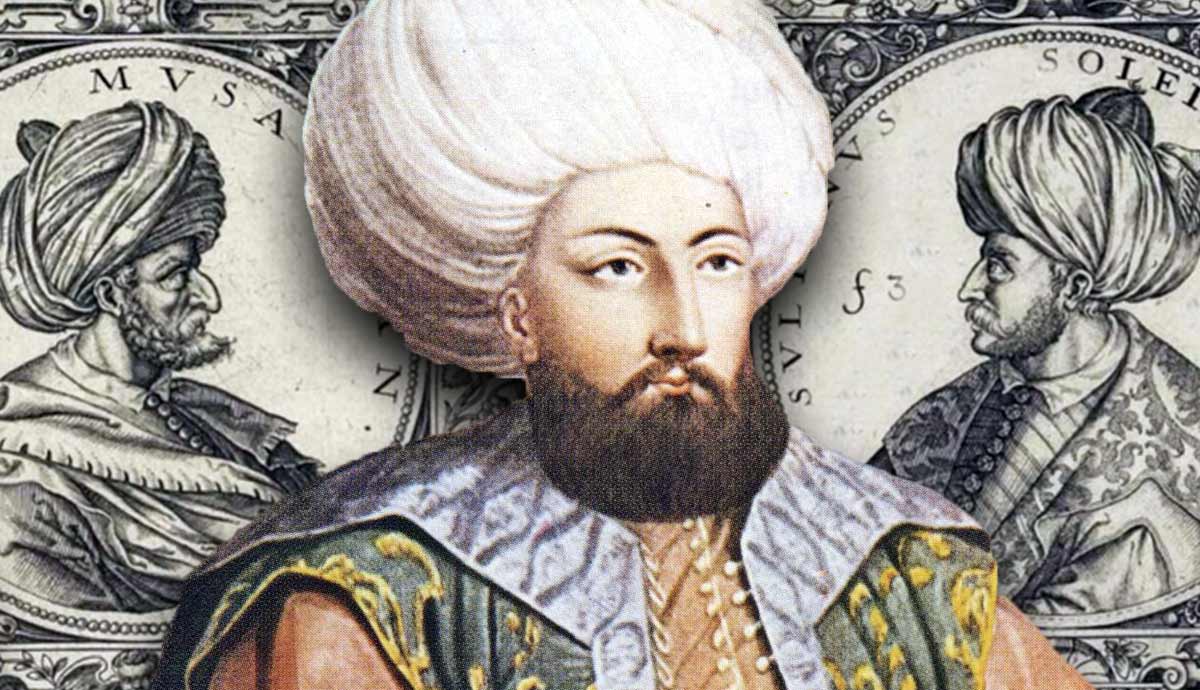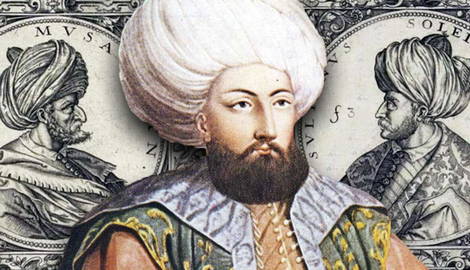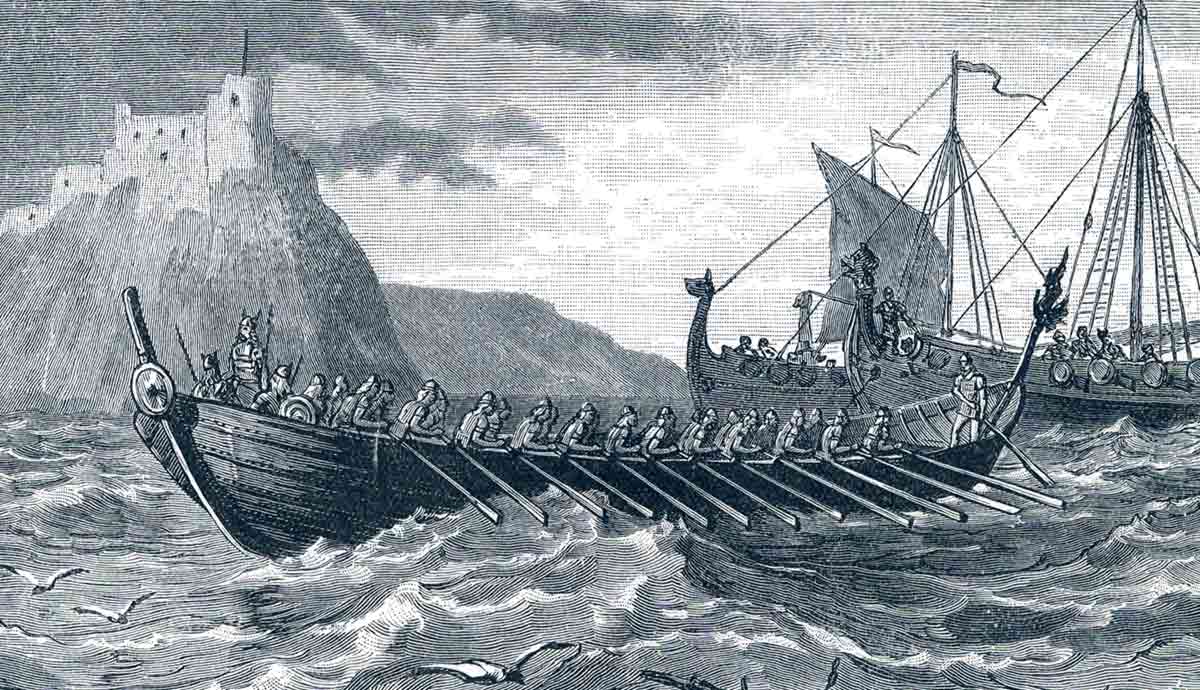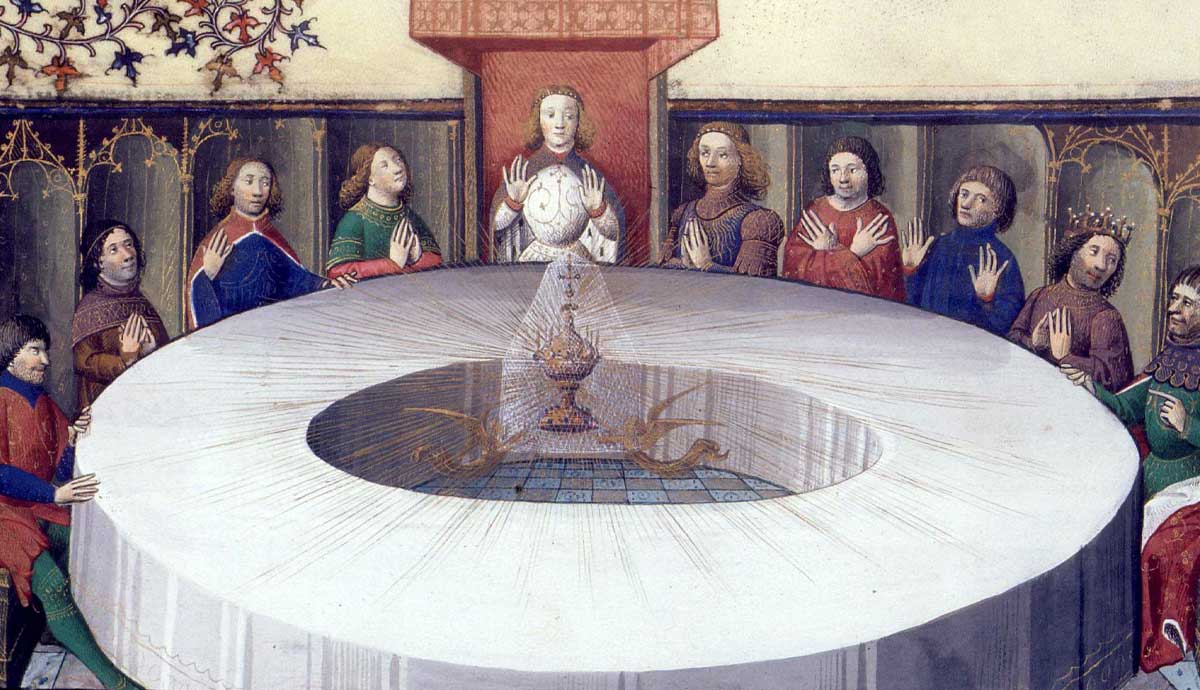
Under Sultan Bayezid, “The Thunderbolt,” the Ottoman Empire had a series of stunning military victories in the Balkans and Western Asia. However, Bayezid’s ambitions placed him in the path of the Turco-Mongol conqueror Timur, who captured the Sultan in battle. Known as the Ottoman Interregnum, this began a decade-long civil war and loss of territory that almost destroyed the Ottomans altogether.
Ottomans: From Nomadic Clan to Empire

Although the Ottomans are largely remembered as a mighty imperial dynasty, they came from humble beginnings. The founder of the empire, Osman I, was the son of Ertughrul, a nomadic chieftain or tribal warrior. Osman was one of many Turkic chieftains who were in a race to control Anatolia—modern-day Turkey—following the breakdown of Seljuk rule in the country.
Osman’s son, Orhan, greatly expanded the small principality by conquering Byzantine towns and even marrying the Byzantine Princess, Theodora. This marriage cemented his alliance with the Byzantine ruler John VI Cantacuzenus. Orhan reigned for around 40 years and built important sedentary institutions, like mosques, caravanserais, and theological colleges (medreses).
After Orhan’s death, his son Murat I became ruler and styled himself as a sultan. This signaled a shift toward a form of rulership more in line with sedentary Islamic societies, rather than nomadic Turkic ones. Murat wanted to expand Ottoman rule across all of Anatolia and the Balkans. He conquered Adrianople (Edirne), making it the new Ottoman capital city.
Next, Murat turned to the Balkans. He captured land in Bulgaria and instituted the infamous devshirme policy which saw Christian boys in the Balkans taken as a levy and raised in the Ottoman court. Many of these boys became janissaries, the Sultan’s elite fighting corps which was instrumental to Ottoman military success. Murat’s end came in 1389 when he was assassinated during the Battle of Kosovo.
Bayezid’s Ambitions

Bayezid I, son of Murat, was commanding the left wing of the army when his father was killed. Bayezid immediately had his brother and rival Yakub Çelebi strangled, leaving no one to challenge his rulership. Bayezid was nicknamed the “thunderbolt,” a nod to the speed and strength with which he conquered territory.
Bayezid’s ambitious nature, however, would land him in trouble with the other Turkic principalities that ruled Anatolia. The borders of his state were slowly encroaching on those of other principalities like the Aydinids. Keeping up with his reputation, he swiftly annexed the territories of these states with the support of his Christian vassals.
Believing that the Turkic warriors under his command may be reluctant to fight their fellow Turks, Bayezid began to neglect the ghazis, the warriors who had once made up the entire armed forces. These Turkic fighters became increasingly alienated by Bayezid, whose policies they no longer agreed with.
Bayezid, however, still had his Serbian and Byzantine vassals, and his janissaries, to fight if the ghazis refused. Pushing on, he annexed the principalities of Germiyan, Teke, and Hamid, taking key historical cities like Konya, the old capital of the Seljuks. However, Bayezid’s ceaseless attacks on these Muslim emirates were to come to an end with the involvement of Timur, the Turco-Mongol conqueror.
Timur the Lame: The Scourge of God

Timur, often called Tamerlane in the West, was born in modern-day Uzbekistan, as the son of a nobleman. He belonged to the Barlas tribe, a Turkified Mongol people. Timur had an exponential rise to power; from a nomadic raider, he became a military leader, and eventually a conqueror and emir (ruler).
The conqueror’s reputation preceded him. Stories of his ruthlessness and savagery spread across Europe and Asia. Like the Mongolians under Chinggis Khan centuries earlier, Timur was merciless towards communities who resisted his rule. His campaigns in Iran reveal the extent to which Timur was ready to punish those who did not submit to him. When the people of Isfahan rebelled against his heavy taxes, he reportedly had over 100,000 people killed and had towers built out of their skulls.
These were effective fear tactics that made Timur’s conquests easier. In fact, those who submitted, like the people of Tabriz (Iran), were left in relative peace. Timur was involved in campaigns around Central Asia and the Indian subcontinent, leaving Anatolia to its own devices. However, Bayezid’s conquest of the Turkic principalities—some of which paid tribute to Timur—was unacceptable in Timur’s eyes.
Throughout the 1390s, Timur and Bayezid exchanged several letters to resolve this situation. These consisted of many insulting phrases, including Bayezid being called an “ant” by Timur, and Timur being called an “old dog” by Bayezid. By the beginning of the 15th century, both rulers began strategic preparations for war.
Aftermath of the Battle of Ankara

Under the pretext of restoring the Turkic principalities to their rightful owners, Timur set out for Anatolia in the year 1400. With an army of 140,000 troops, he faced Bayezid on the battlefield in 1402.
Bayezid’s army began to unravel as the Turkic tribespeople deserted, choosing instead to fight for Timur, who they felt a kinship with as former steppe nomads. Bayezid’s Balkan vassals also prematurely retreated, further weakening his military power. The final straw was when Bayezid was captured by Timur’s forces.
Bayezid and his family, including his wife Despina and son Mustafa, were held captive by Timur until Bayezid’s suspicious death in 1403. Bayezid’s sons sprang into action because of Turkic succession rules which allowed any male member of the royal family to become Sultan. However, Timur recognized Mehmet as his father’s heir and placed him on the Ottoman throne.
Yet, Bayezid’s other sons rejected Timur’s decision. They refused to acknowledge Mehmet’s authority, and all claimed that they had a right to rule the small empire. It appeared that civil war was inevitable.
Civil War

Mehmet’s older brother, Isa, established himself as ruler in Bursa. With the encouragement of his advisors, Mehmet left his province of Amasya and waged war on his elder brother. After losing a minor battle, Isa sought the help of the Byzantines and his brother Suleyman. In 1406, while bathing at a hamam (Turkish bath), Mehmet’s forces ambushed Isa and strangled him to death.
Of the four brothers left alive, Mehmet had the strongest support. After the death of his grand vizier Çandarli Ali Pasa, Suleyman’s standing amongst many of the frontiersmen and tribal Turks began to weaken. Ever the warrior, Suleyman spent the next few years traveling across the empire, campaigning for the support of the Byzantines, vassal powers like Bulgaria, and the Turkmen tribes in the Balkans.
Upon hearing of his brother Musa’s arrival in Edirne in the winter of 1411, Suleyman sought to make an escape. However, he was killed by villagers who believed that they would receive a reward from his rivals. To their surprise, Musa was incensed that royal blood had been spilled by commoners and ordered the demolition of their entire village!
Mehmet’s Triumph

Since Prince Mustafa was still being held captive at the Timurid court, the only two contenders for the throne were now princes Mehmet and Musa. The brothers agreed to split the remaining Ottoman lands in half, with Mehmet ruling as Sultan in Anatolia and Musa, also a sultan, ruling over the European territories.
Yet, this was not what Musa truly desired. In February 1411, Musa declared his independence by minting coins in his name. He also besieged Constantinople, just as his father Bayezid had done. The distressed Byzantine emperor Manuel II Palaeologus begged Mehmet for protection against his brother’s attacks. Mehmet dragged his troops to Constantinople, where they attacked—albeit unsuccessfully—Musa’s army.
Mehmet needed further assistance and turned to Stefan Lazarević, the ruler of Serbia and brother of Despina Hatun, Bayezid I’s wife. On July 5, 1413, in modern-day Samokov, Bulgaria, the armies of Mehmet and Musa met. Despite his initial success, Musa’s armies lost footing when noblemen defected to Mehmet’s side.
The Battle of Çamurlu ended with the victory of Mehmet’s troops and the death of Musa. Mehmet was now the uncontested Sultan of the Ottoman Empire. That was until his older brother Mustafa was released from captivity by Timur’s son, Shahrukh. From 1415-1416, the interregnum was briefly restarted. Luckily for Mehmet, the Byzantine Emperor agreed to keep Mustafa captive on the island of Lesbos for the rest of Mehmet’s reign.
Mehmet’s Reign and Struggles

Mehmet’s reign was instrumental in bringing the Ottoman Empire back to life. Hailed as the “second founder” of the Ottoman state, Mehmet set up his capital in Edirne, a prominent city near Constantinople. He also made many territorial gains in the Balkans and Eastern Anatolia.
Nonetheless, his reign wasn’t without problems. Mustafa, his elder brother, briefly laid claim to power. In Rumelia—the empire’s European provinces—a popular religious movement led by the Sufi mystic and revolutionary Sheikh Bedreddin had emerged. By 1416, this had turned into a full-blown rebellion against Mehmet’s reign.
While Mehmet tried to restore the former territories of the empire, his viziers dealt with the uprisings inspired by this mystical sheikh. In 1420, Bedreddin, along with thousands of his followers, were slaughtered, ending the challenge to Mehmet’s authority.
Mehmet died a year later, leaving the throne to his 16-year-old son Murat. The interregnum was officially over as the young sultan inherited a relatively unified empire of 870,000 square kilometers (335,908 square miles). Although he would soon face social and political troubles of his own, Murat owed the intellectual and artistic flourishing of his time to his father’s efforts for peace.










